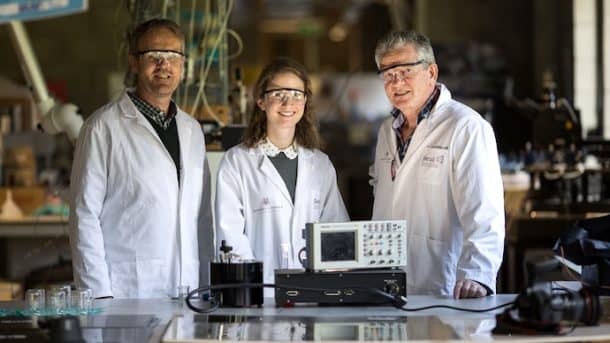We have been using fossil fuels for over a hundred years. Fossil fuels are not only adding immensely to the pollution of our environment, but they are also depleting pretty quick. In the years to come, we may have no fossil fuels to power our industries and automobiles. Renewable energies are the need of the day and scientists are trying their best to extract them from anything, whether it is waves, car exhaust, diapers, or even tears.
A team of Irish scientists from the Bernal Institute of Limerick discovered a way to produce electricity from tears. The team managed to generate electric current by applying pressure to the lysozyme protein that is found in both tears and egg whites.

Some materials like quartz can convert mechanical energy to electrical energy under applied pressure, and the phenomenon is known as piezoelectricity. Aimee Stapleton, the lead author of the study who is also an Irish Research Council EMBARK postgraduate fellow in the Department of Physics and Bernal Institute, says:
“While piezoelectricity is used all around us, the capacity to generate electricity from this particular protein had not been explored. The extent of the piezoelectricity in lysozyme crystals is significant. It is of the same order of magnitude found in quartz. However, because it is a biological material, it is nontoxic so could have many innovative applications such as electroactive, anti-microbial coatings for medical implants.”
The piezoelectric materials are not usually used for producing large amounts of electricity, but they find many applications in our lives, particularly medicine. In the field of medicine, they can be used to control the drug release in the body or serve as an antimicrobial coating for implants. There is a variety of piezoelectric materials that can be used in the same way, but many of them are not biocompatible. Some of them even contain toxic elements like lead.
As the authors of the study put it, “Crystals are the gold-standard for measuring piezoelectricity in non-biological materials. Our team has shown that the same approach can be taken in understanding this effect in biology. This is a new approach, as scientists so far have tried to understand piezoelectricity in biology using complex hierarchical structures such as tissues, cells or polypeptides rather than investigating simpler fundamental building blocks.”
The research titled “The direct piezoelectric effect in the globular protein lysozyme” was published in the journal Applied Physics Letters.
The discovery will bring many changes in medicine and other applications. Luuk van der Wielen, the Director of Bernal Institute and Professor of biosystems engineering design, says,
“The impact of this discovery in the field of biological piezoelectricity will be huge.”
We sure do look forward to it.


